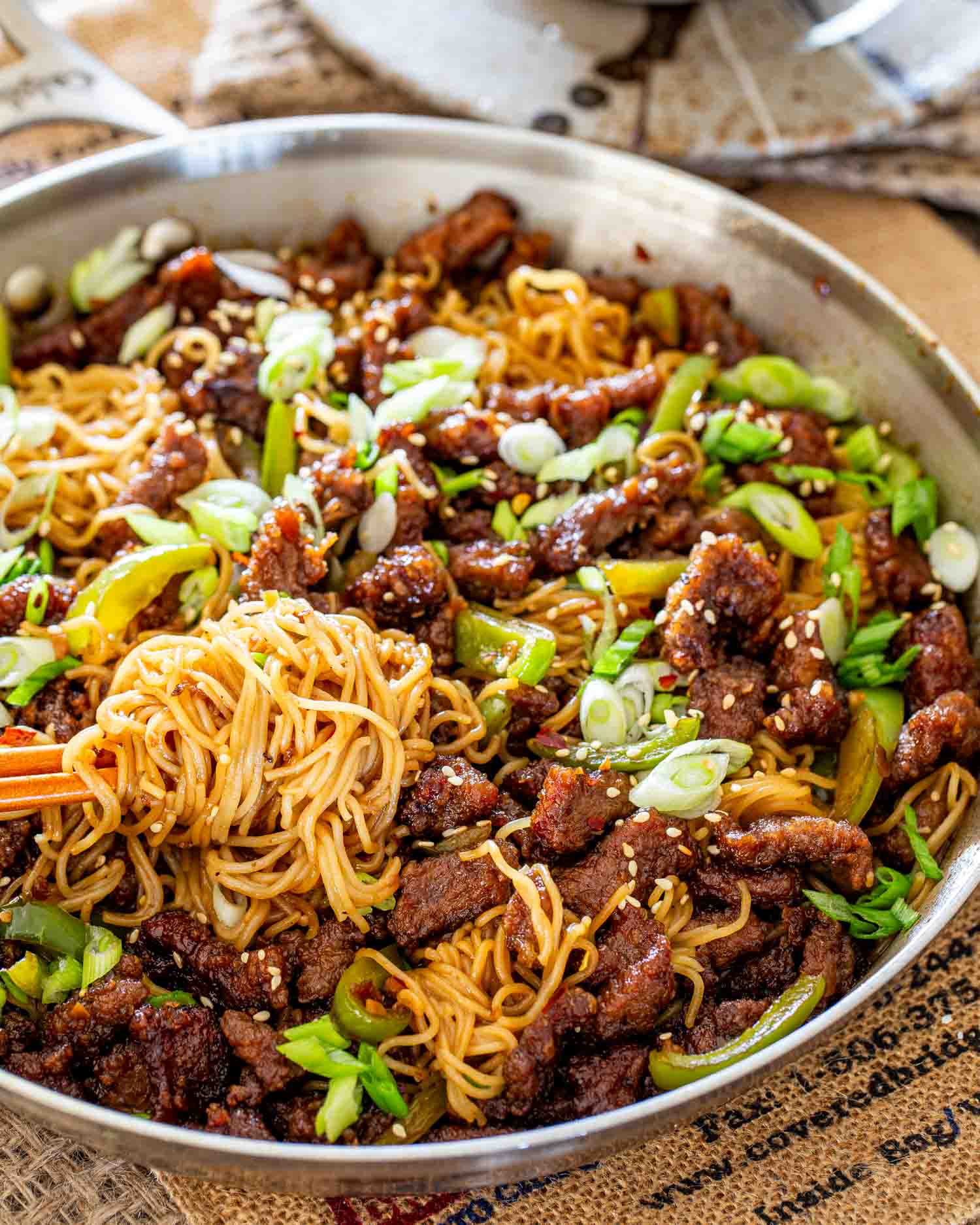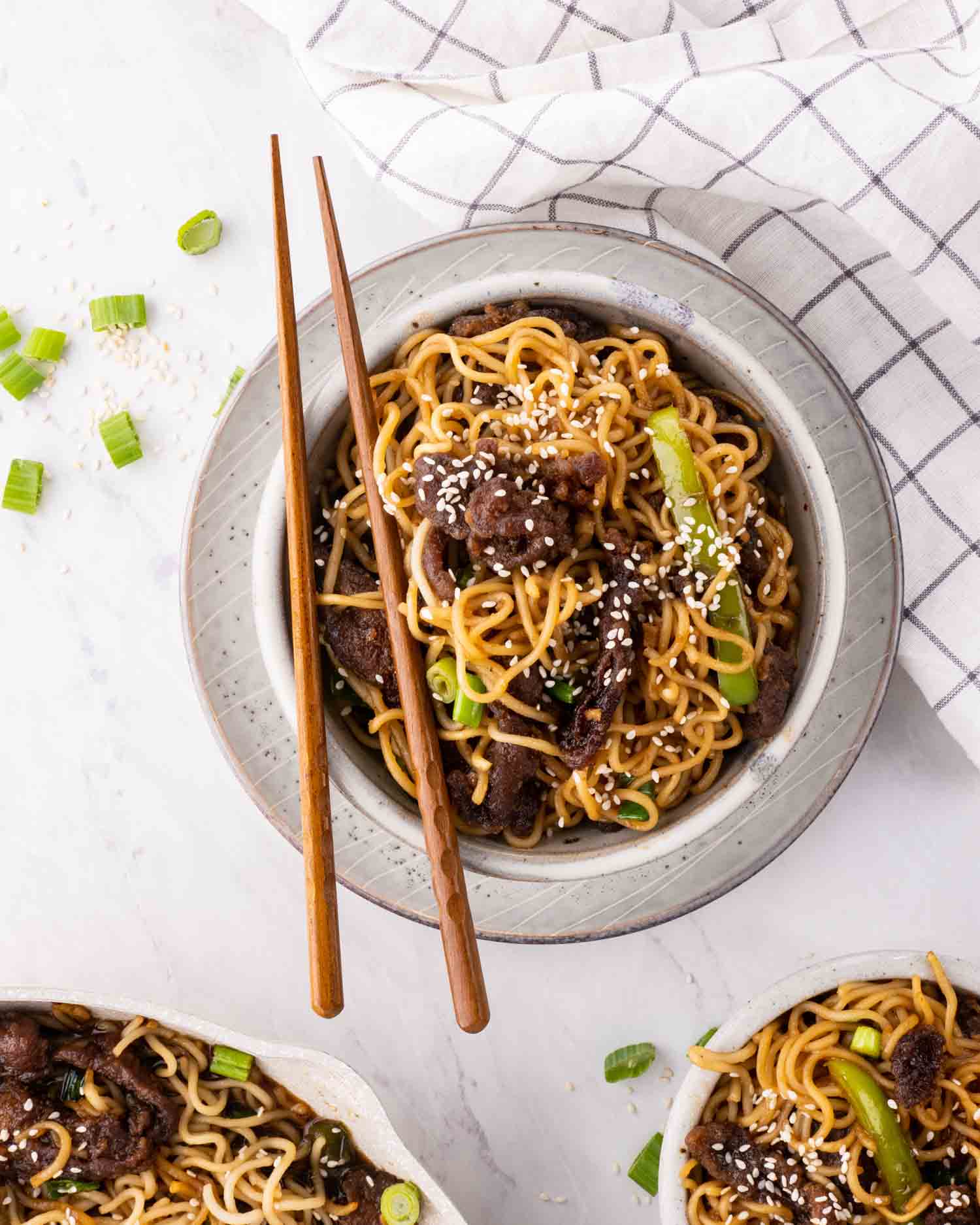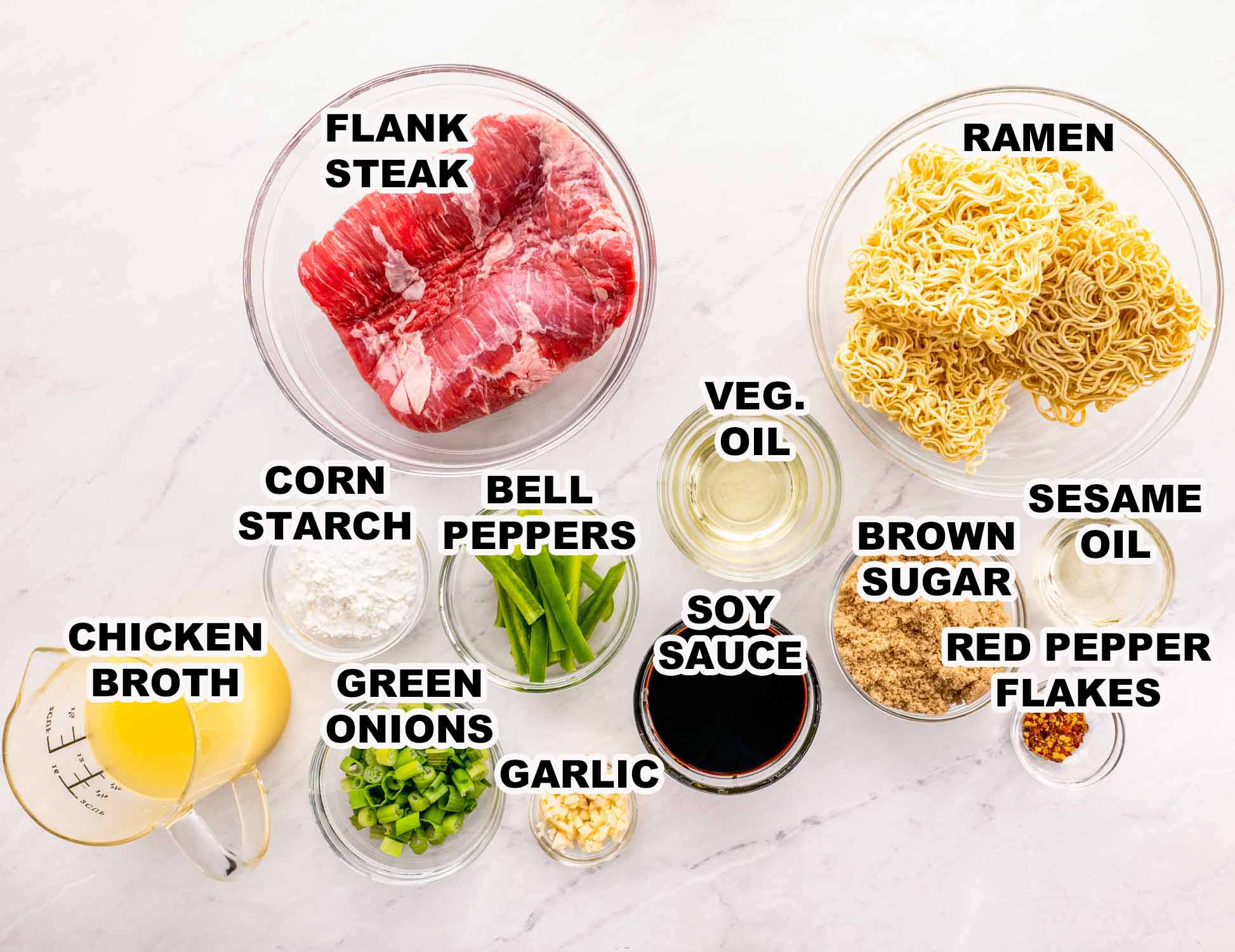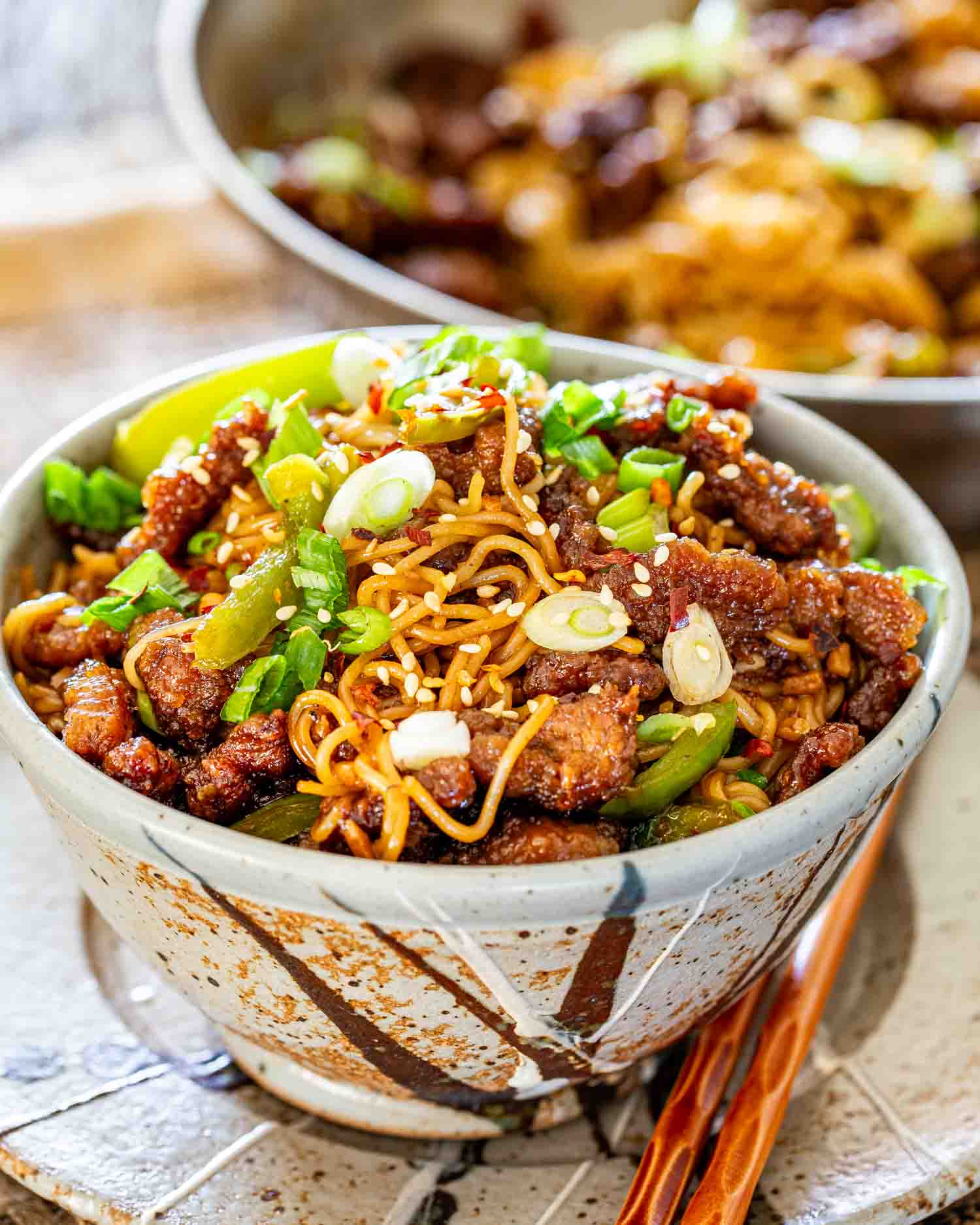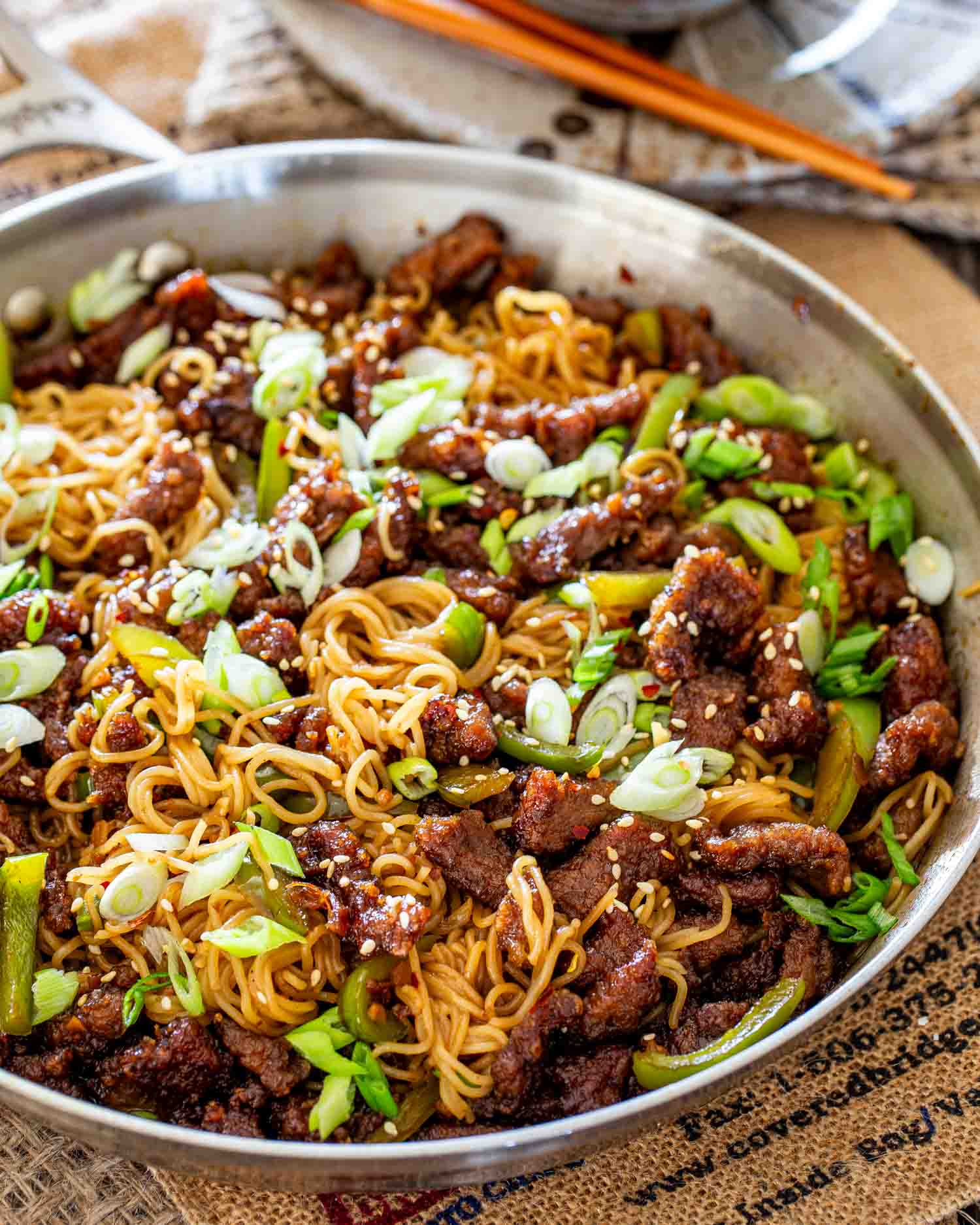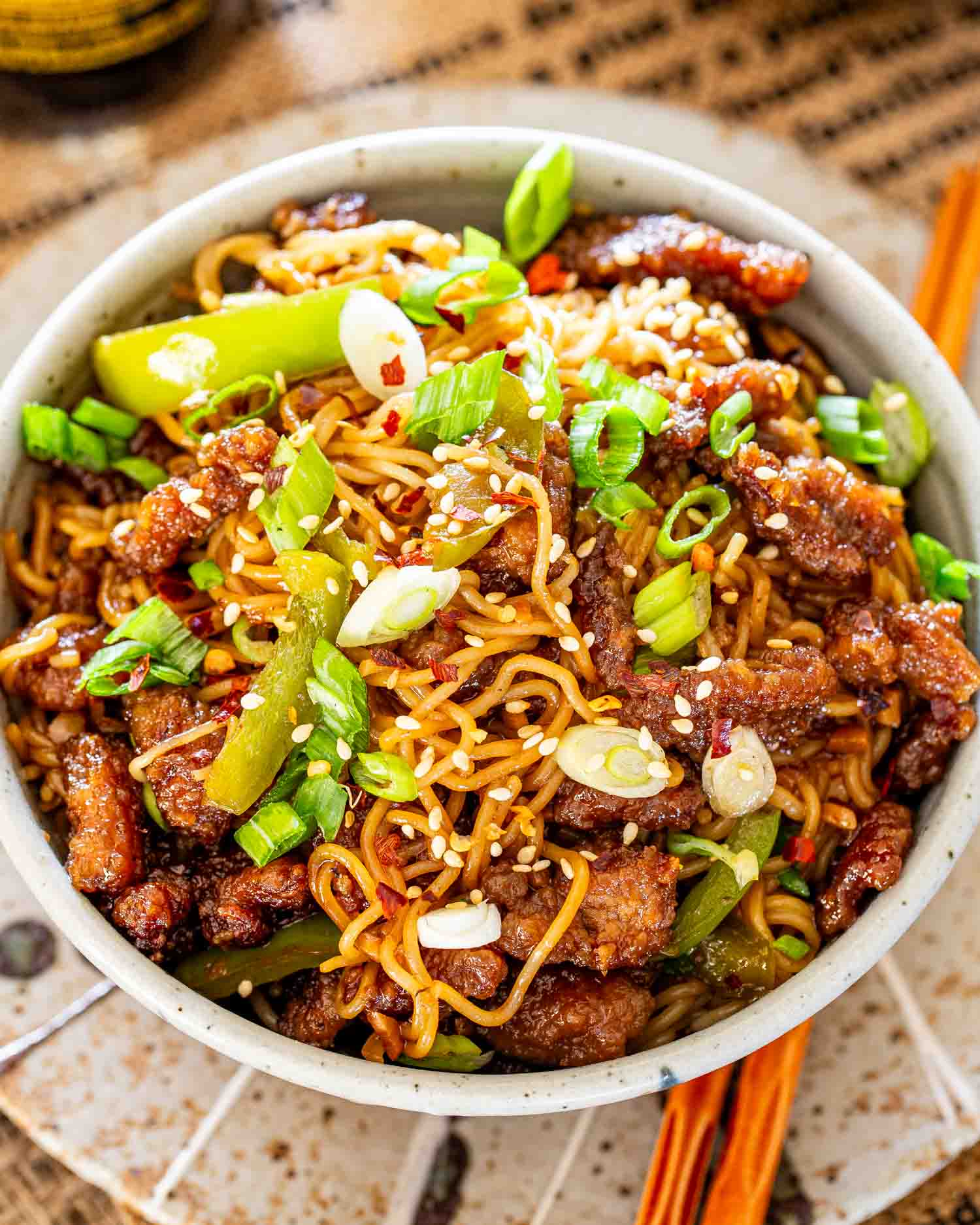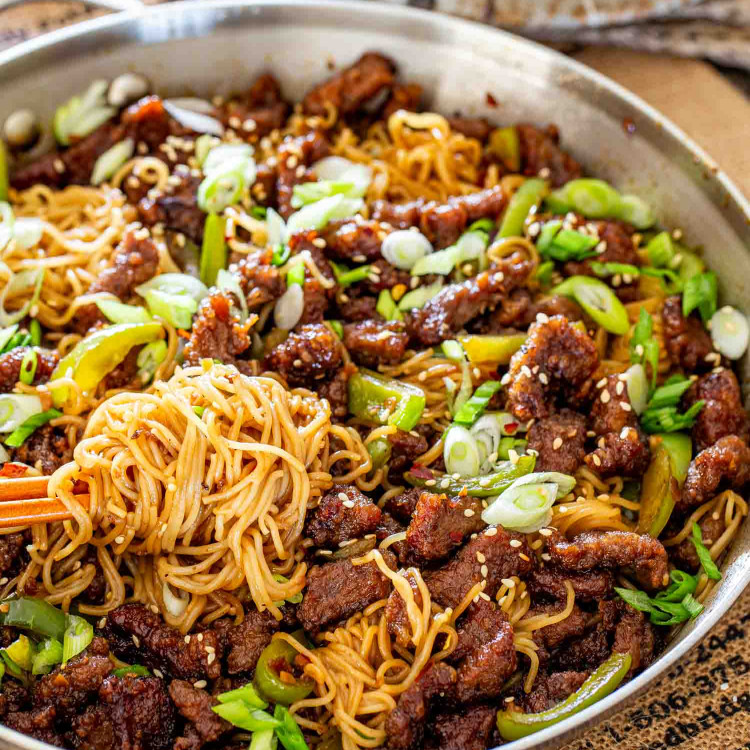The Best Mongolian Beef Noodles Recipe
Sure, ramen may have a reputation as the college kid’s go-to meal, but that doesn’t mean we can’t elevate it. Let’s think of it not as a humble bowl of noodles but as a blank canvas for culinary creativity, taking it from just edible to entirely exciting. Mongolian Beef has always been my take-out weakness – the flavors, the textures, it’s simply irresistible. But instead of dialing up the local takeaway, I decided to channel that craving into crafting this delectable dish at home. Trust me, not only is it ridiculously simple to make, but it also outshines any restaurant version.
Flank Steak: The star of this dish, flank steak provides a lean, beefy flavor. It’s crucial to cut it against the grain for tender, bite-sized pieces. Cornstarch: This helps to create a light, crispy coating on the beef. Vegetable Oil: Used for searing the beef to a perfect brown. Green Bell Pepper: Adds a fresh, crunchy contrast to the dish. Ramen Noodles: My choice of noodle, Ramen is soft, slurp-able, and perfectly carries our savory sauce. Green Onions: These provide a pop of color and a fresh, sharp flavor. Sesame Oil: Contributes a toasty, nutty undertone to the sauce. Soy Sauce: It’s the primary seasoning, providing a deep umami and salty flavor. Make sure to use a low sodium soy sauce to control the sodium level. Brown Sugar: It brings a touch of sweetness, balancing the savory elements of the sauce. Chicken Broth: Forms the base of our sauce, providing a rich backdrop of flavor. Garlic: A must-have for a flavor boost. Red Pepper Flakes: Add a hint of heat. Feel free to adjust to your heat preference.
Ready to whip up some Mongolian magic in your kitchen? Let’s get started. Start by slicing your flank steak into thin strips. Then, in a large ziploc bag, add the cornstarch and beef. Give it a good shake until every piece is well-coated. The cornstarch is key to getting that lovely, light crispiness on our beef. Heat up some vegetable oil in a non-stick skillet, and when it’s hot, introduce your beef. You’ll want to work in batches to ensure each piece gets properly browned – no sticking together allowed! Once done, set your beef aside. sing the same skillet, sauté your bell pepper strips until they’re just soft. Set these aside with your beef. Now, it’s time to build that rich, flavorful sauce right in your skillet. Combine the sesame oil, soy sauce, brown sugar, garlic, chicken broth, and red pepper flakes, and let it simmer. The aim is to get it thick and glossy, but remember – you’ll want enough to coat your noodles! While your sauce is simmering, cook your ramen noodles as per the packet instructions. Return the beef and bell pepper to your skillet and give them a good toss in your sauce. Now add your cooked noodles to the party, making sure everything gets a good mix. A sprinkle of green onions, and you’re ready to serve!
Storage
Fridge
Transfer any leftovers to an airtight container and pop them in the refrigerator. They will keep nicely for up to 3 days. When you’re ready to enjoy them again, you can reheat the dish in a skillet over medium heat, adding a little bit of water or broth if needed to loosen up the noodles and sauce.
Freezer
While this Mongolian Beef Noodles dish is super tasty, it’s not the best candidate for freezing due to the cooked noodles. The noodles can become mushy once thawed and reheated. However, you could freeze the Mongolian beef separately. To do this, let the cooked beef cool down, then transfer it into airtight containers or freezer-safe bags. It can be frozen for up to 3 months. When ready to serve, thaw it in the fridge overnight and reheat in a skillet. You’ll just need to cook up some fresh noodles to toss with your reheated beef and sauce.
Other Asian Style Recipes To Try
Sweet And Sour Meatballs Yakisoba Three Cup Chicken Black Pepper Beef Korean Beef Bulgogi Beef Lo Mein Mongolian Beef Asian Ground Beef Noodles Beef And Noodles

